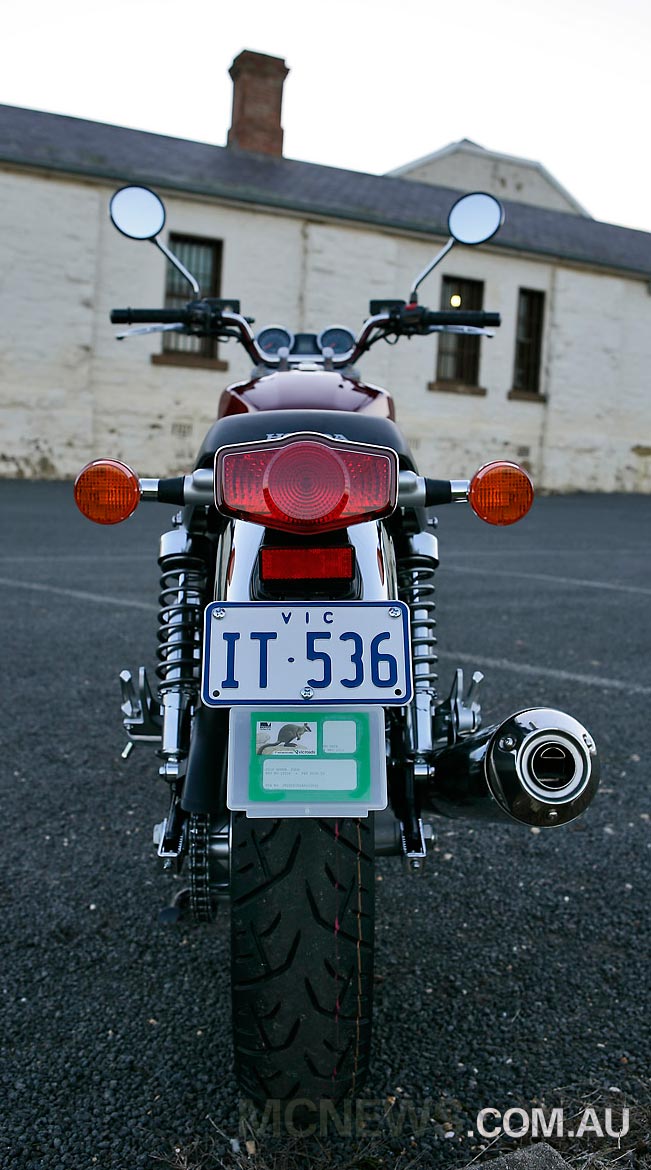Honda CB1100 Review
There were plenty of retro bikes on the market around when Honda released the CB1100 in 2010 but at that time no Japanese offering came across anywhere near as authentic as the CB1100.
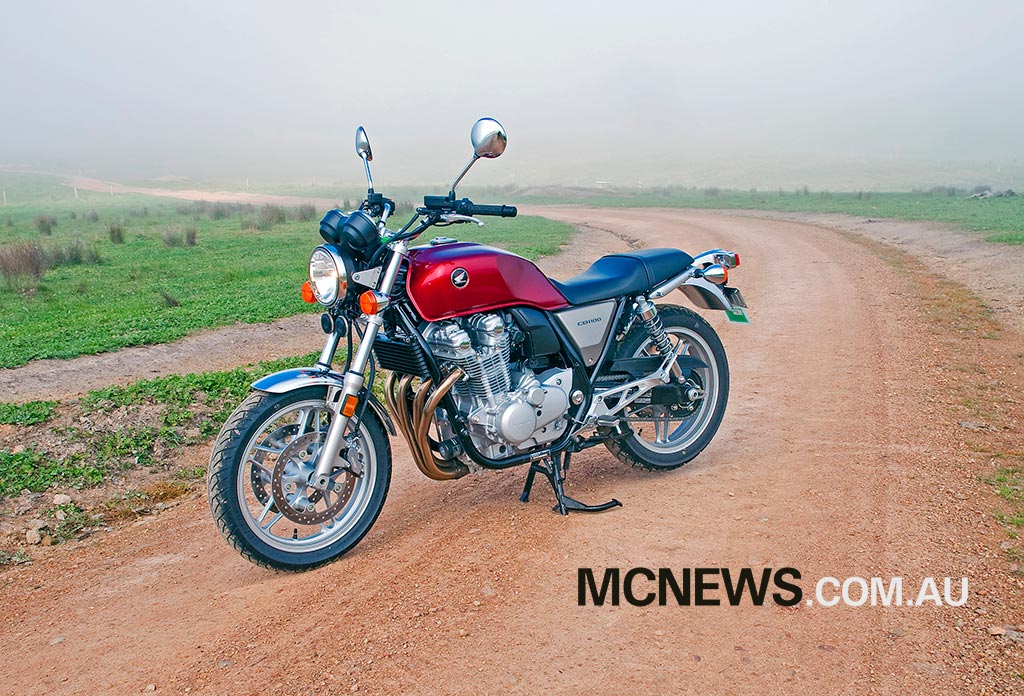
Triumph’s Bonneville and Thruxton models of the current day had been a huge success for the British brand and faithfully echoed the 60s. At the time of the Australian release of the machine in 2013, Honda’s CB1100 was by far the most faithful of any attempt to recreate the charm of the 70s.
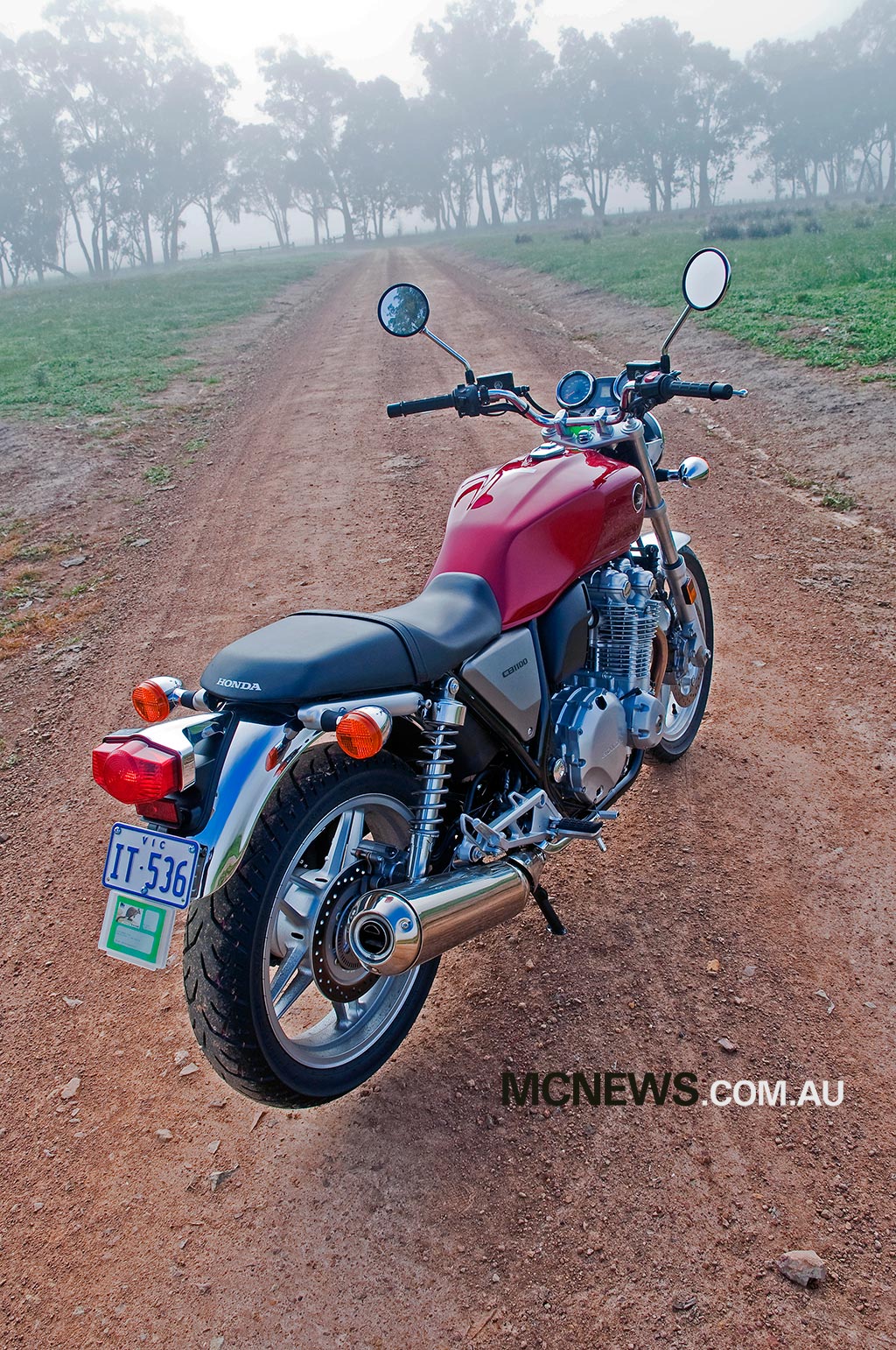
The CB1100 was for a long while only sold in Japan, so when the machine came Down Under in 2013 I was keen to get hold of a machine and put a quick 1000km under its wheels.
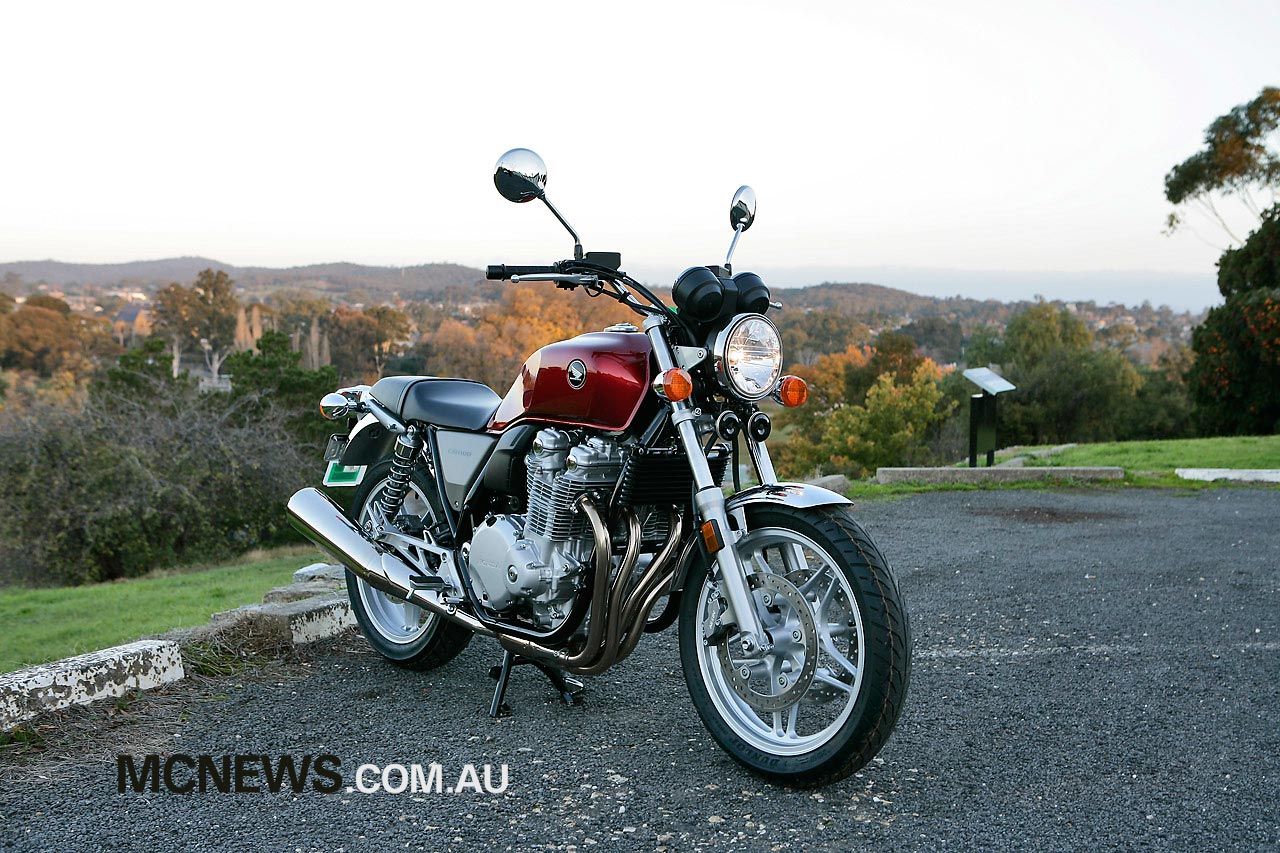
After picking the CB1100 up from Honda HQ in Campbellfield (VIC) I made a beeline for Castlemaine to meet up with photographer Stephen Piper for a shoot at the old Gaol. Even Honda Australia had no decent images of the bike so we went to extra lengths to ensure we did justice to the timeless lines of the CB1100.
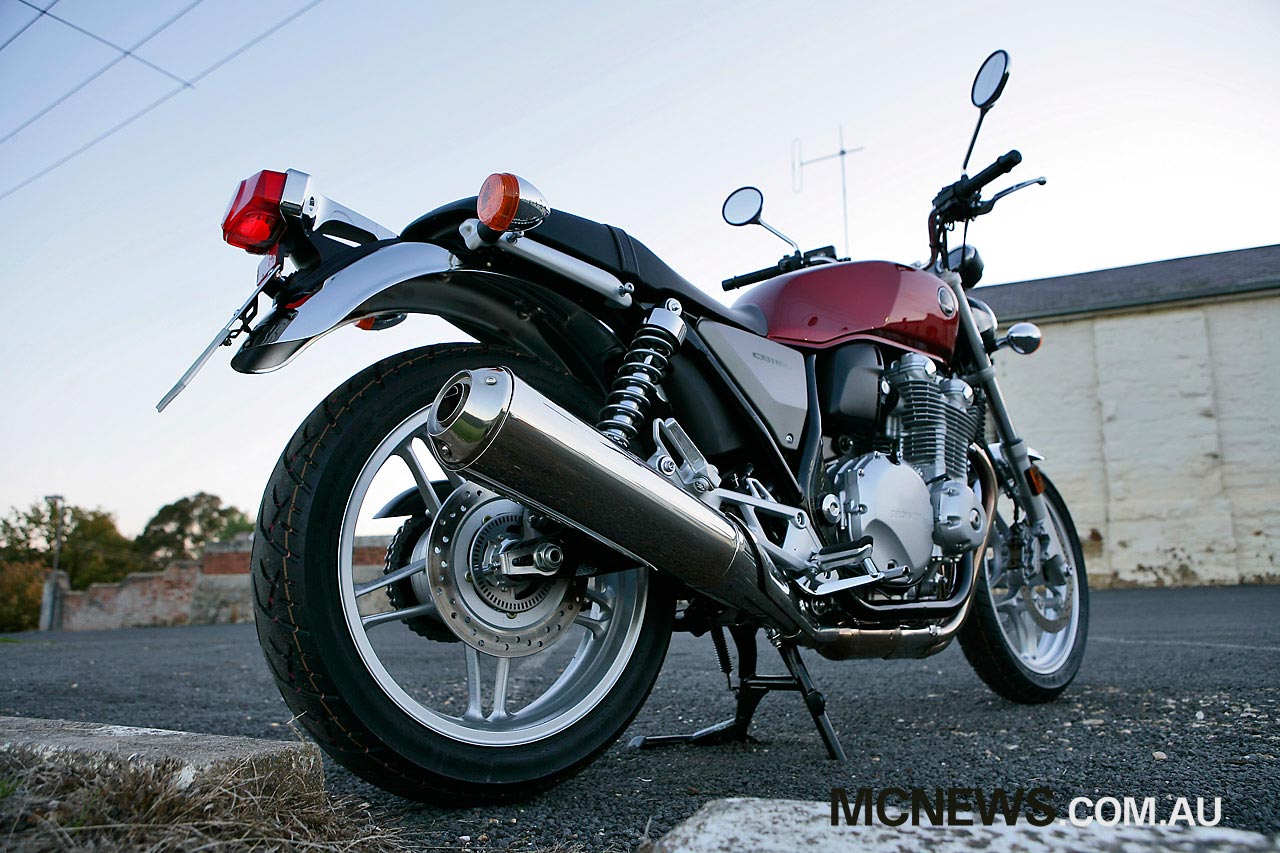
We hope you agree that the effort was worthwhile. However, even Stephen’s skills don’t convey the true beauty and charm that the machine exudes in the flesh.
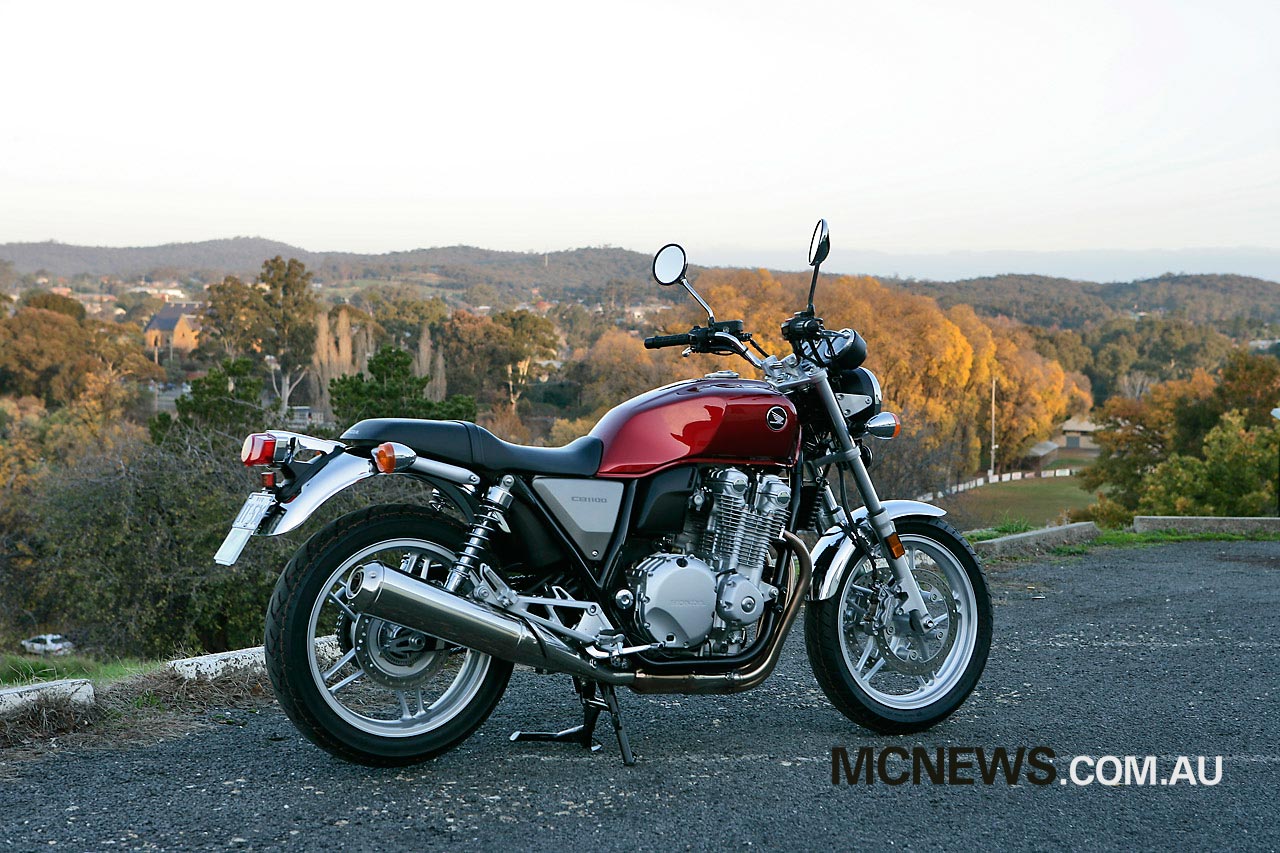
On the road the CB1100 is not quite as deserving of such continuous strings of superlatives.
It does nothing wrong and is competent enough, just don’t expect it to perform like a modern day sports-naked and you won’t be too disappointed.
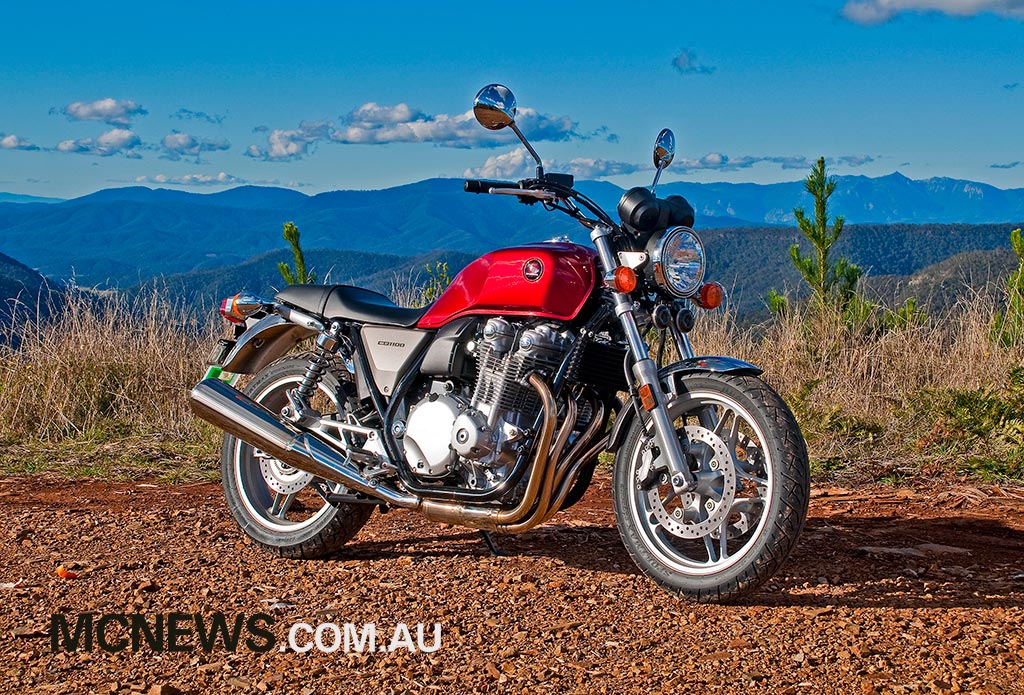
The 1140 cc engine is flexible and delivers good power but is no huge grunt factory, certainly nothing like the massive pull exhibited from the more contemporary CB1300 available at the time, or the almost Fireblade like performance from the thoroughly modern CB1000R.
The CB1100 will still pull top gear from 1500 rpm without grumbling but don’t expect rapid progress until a few thousand rpm later. The engine is best kept between 3500 and 7500 rpm for maximum enjoyment in the hills. On the highway the mill is turning a leisurely 3400 rpm at 100 km/h in top gear.
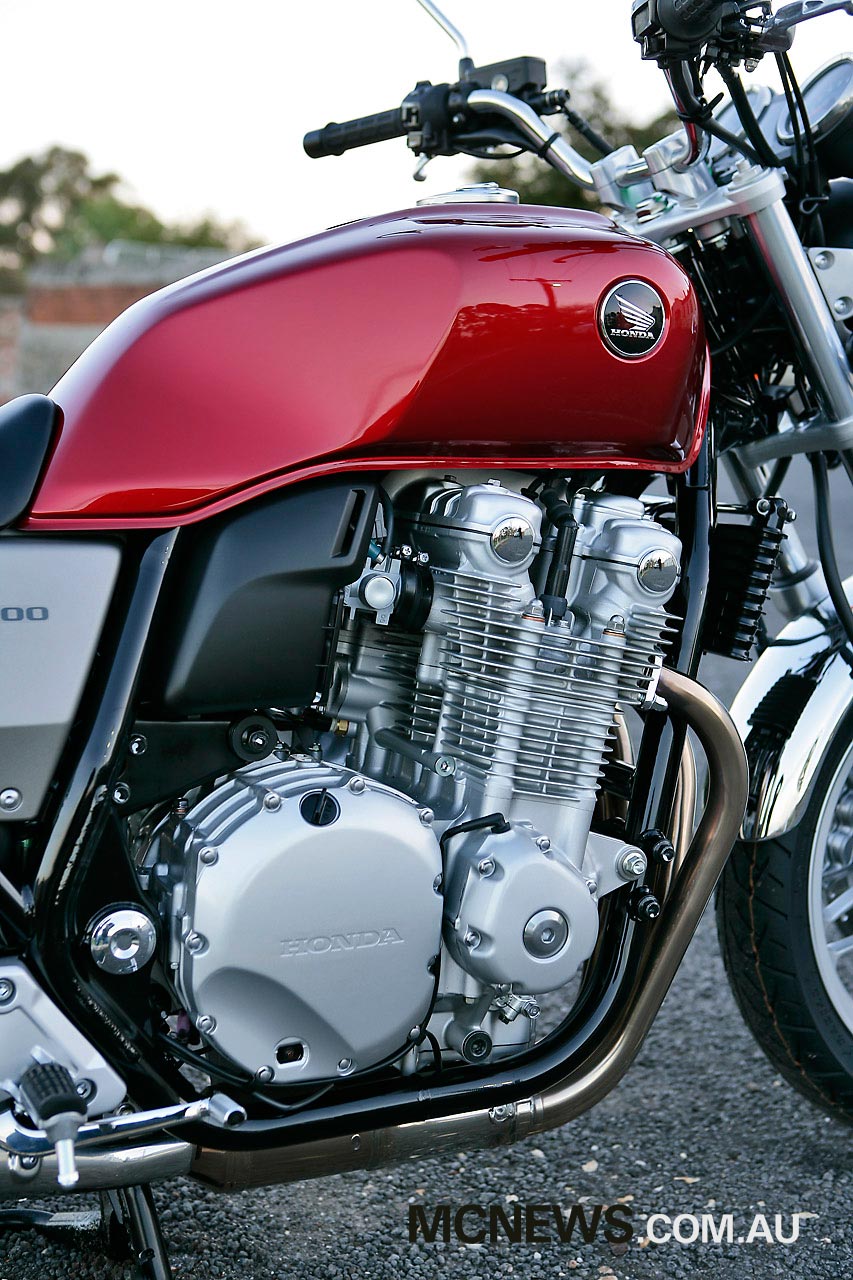
Overall I would have expected the 1140 cc four to have more grunt down low. No doubt it is very conservatively tuned to meet 2010 emission requirements. That’s quite a task from an air-oil cooled mill, and it is those emissions requirements that sounded the death knell of Suzuki’s GSX1400.
A servo controlled flap-valve in the single muffler helps to improve emissions and reduces the acoustics. Nothing a set of flat-slide carbs and a four-into-four exhaust system wouldn’t fix!
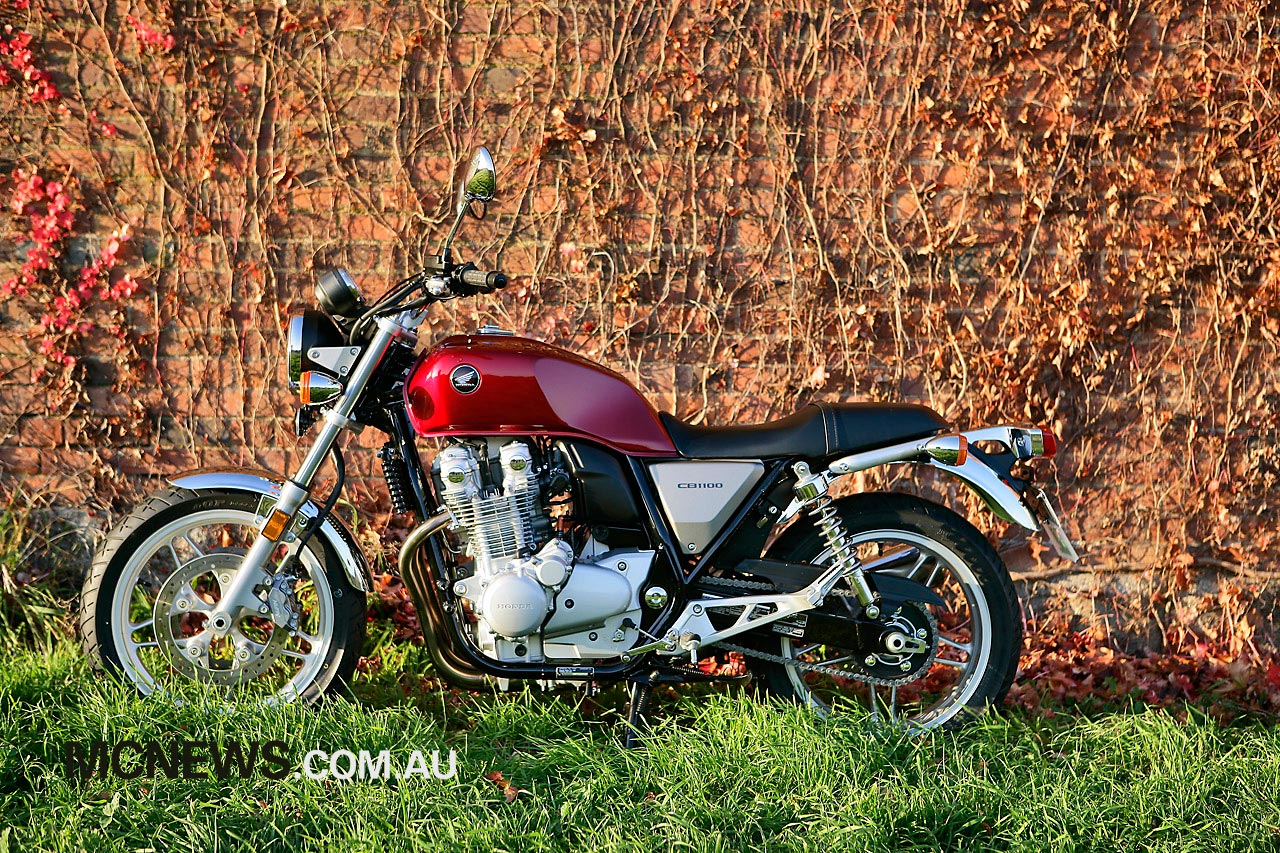
The five-speed gearbox is slick and the hydraulic clutch light and easy to use. Final drive is via chain and a centre-stand is provided to simplify maintenance tasks.
In keeping with the period theme Honda have fitted the CB1100 with 18” rims. This old style sizing in narrow 110mm (F) and 140mm (R) widths helps provide great stability at the expense of a little agility. The only time this is really felt while riding is when adjusting line mid-corner, as the larger diameter rims are a little slower to respond to quick changes of direction. Don’t for one minute though think this renders the CB1100 cumbersome. The machine handles really quite well, especially in the tight cut and thrust of challenging roads, and ground clearance is adequate.
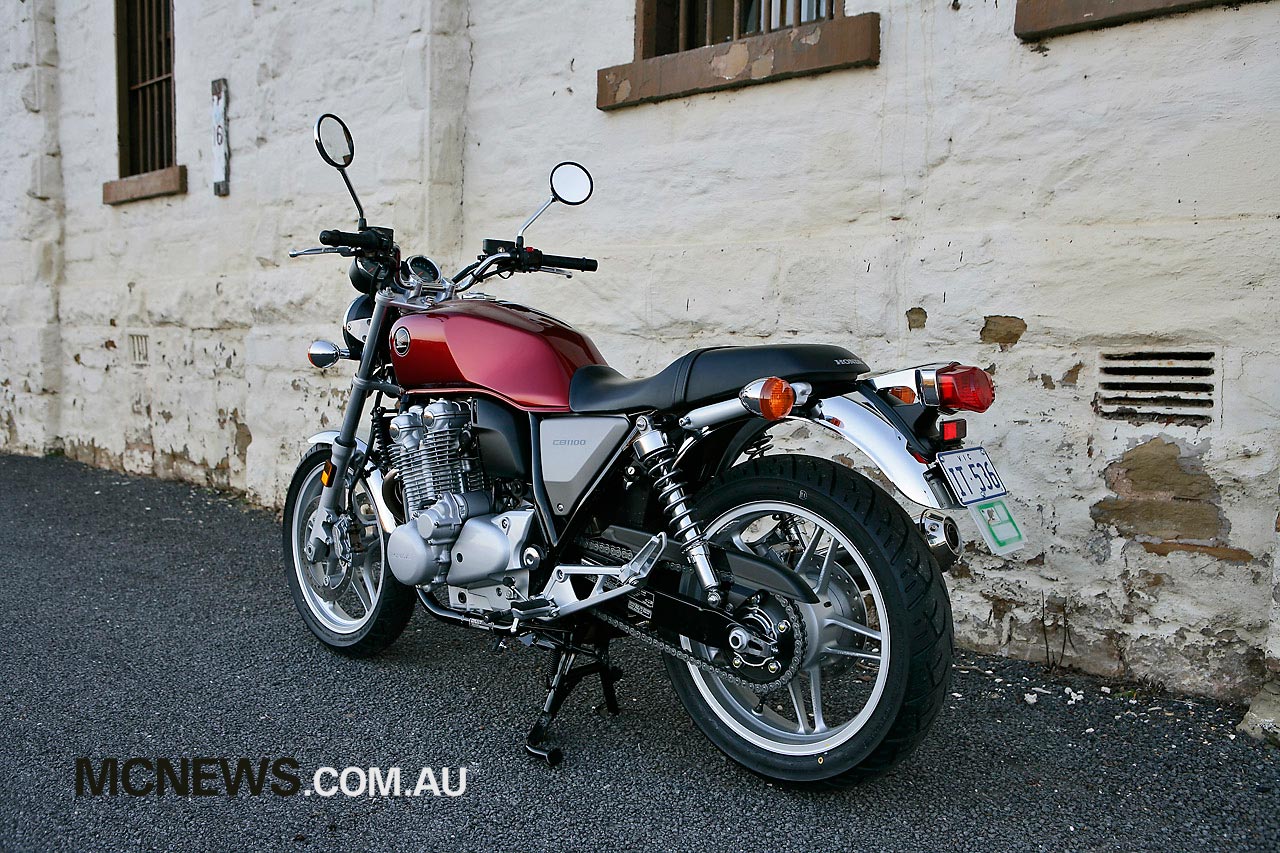
When speeds increase the preload-adjustable Showa suspension does start to struggle a little, as you would expect, but keep your inputs smooth and the CB1100 provides a rewarding ride. It was more than capable of providing me with plenty of satisfaction during a spirited strop back and forth across the Mount Samaria Range above the King Valley, with time to admire the magnificent views to the Australian Alps along the way. Mid-corner bumps could be dealt with a little better but overall the CB1100 is quite sure-footed.
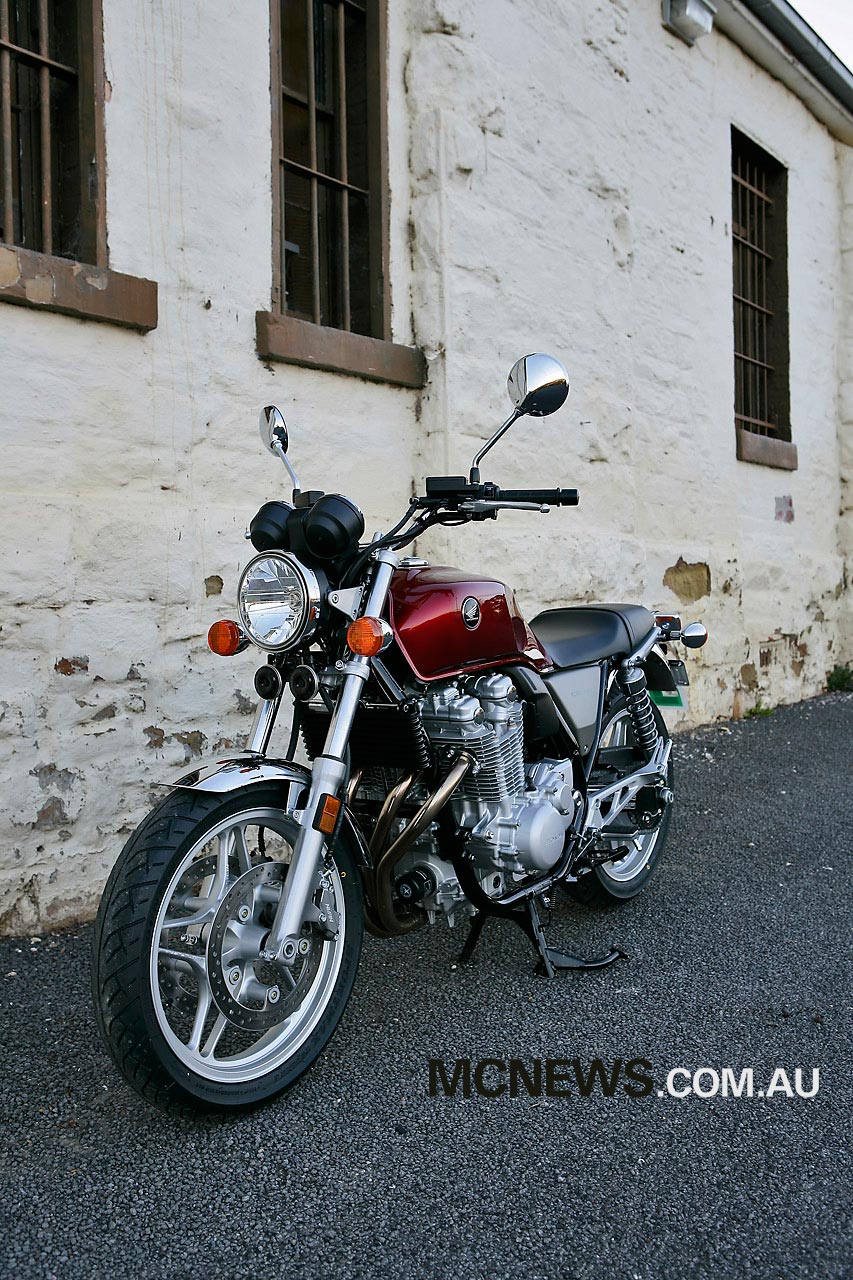
Thankfully the braking hardware on the CB1100 is nothing like that of the originals. A pair of 296mm discs are progressively clamped by Nissin four-piston calipers. Feel is good and power is easily modulated through a fairly long stroke through the lever. A light squeeze provides smooth and surefooted braking power while a firm squeeze can easily overcome the skinny front hoop. Japan also gets an ABS version of the CB1100 but that model is did not make its way Down Under on initial release, no doubt due to cost concerns. ABS would have been nice on this bike, largely due to modest rubber.
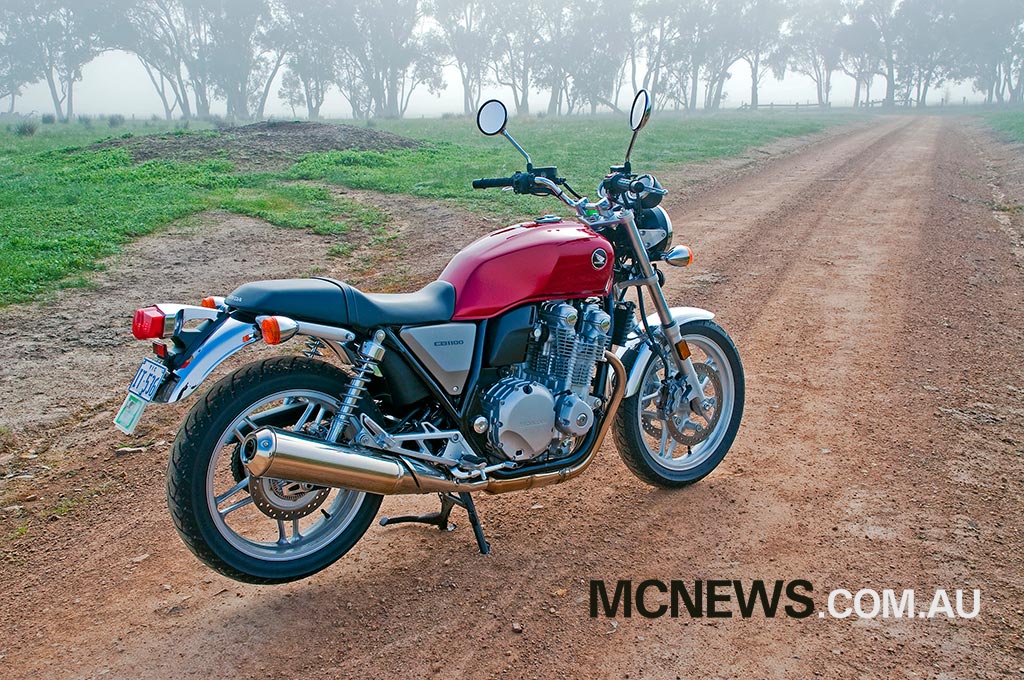
On the open road the CB1100 provides a natural riding position and I never experienced any significant wind buffeting. The seat is amenable around town but after a couple of hours in the saddle it can get a little uncomfortable and some firmer padding would be welcome on long haul rides. A low 775 mm seat height and low tail piece makes for easy mounts and dismounts.
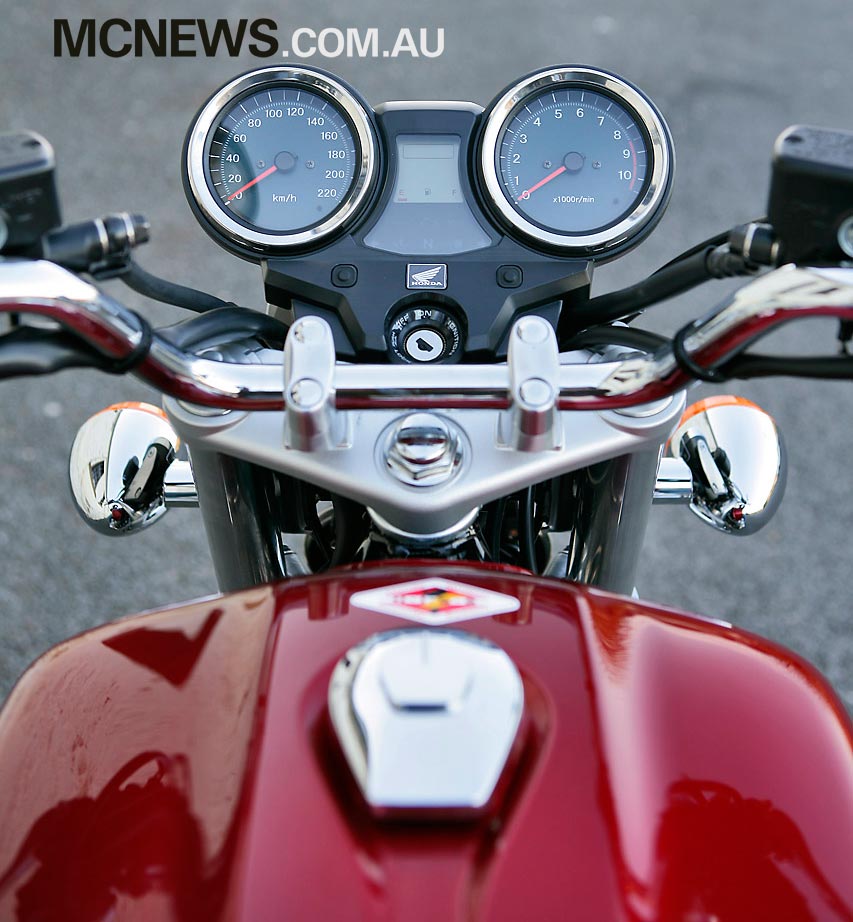
I enjoyed my time with the CB1100 immensely. Much, much more than I imagined I would. Maybe I am getting old, or perhaps just a little soft in the head, but at the end of the day I couldn’t care less that it doesn’t have the massive grunt of its contemporaries, or scalpel like handling. I loved every minute of my time aboard the CB1100, it won me over.
The only real nuances that stand out are a limited tank range and its $15,090 price point. Returning 6 litres per 100km economy the 14.6 litre tank is only good for a 240 km range to empty. A fuel gauge is thankfully provided so you can keep an eye on things. A low fuel warning flashes when there is 3.5 litres remaining. I never managed more than 185 km before the fuel light illuminated. I also must question the 12,000 km valve clearance inspections in the user manual. On an engine in such a mild state of tune that regimen seems onerous in this day and age.
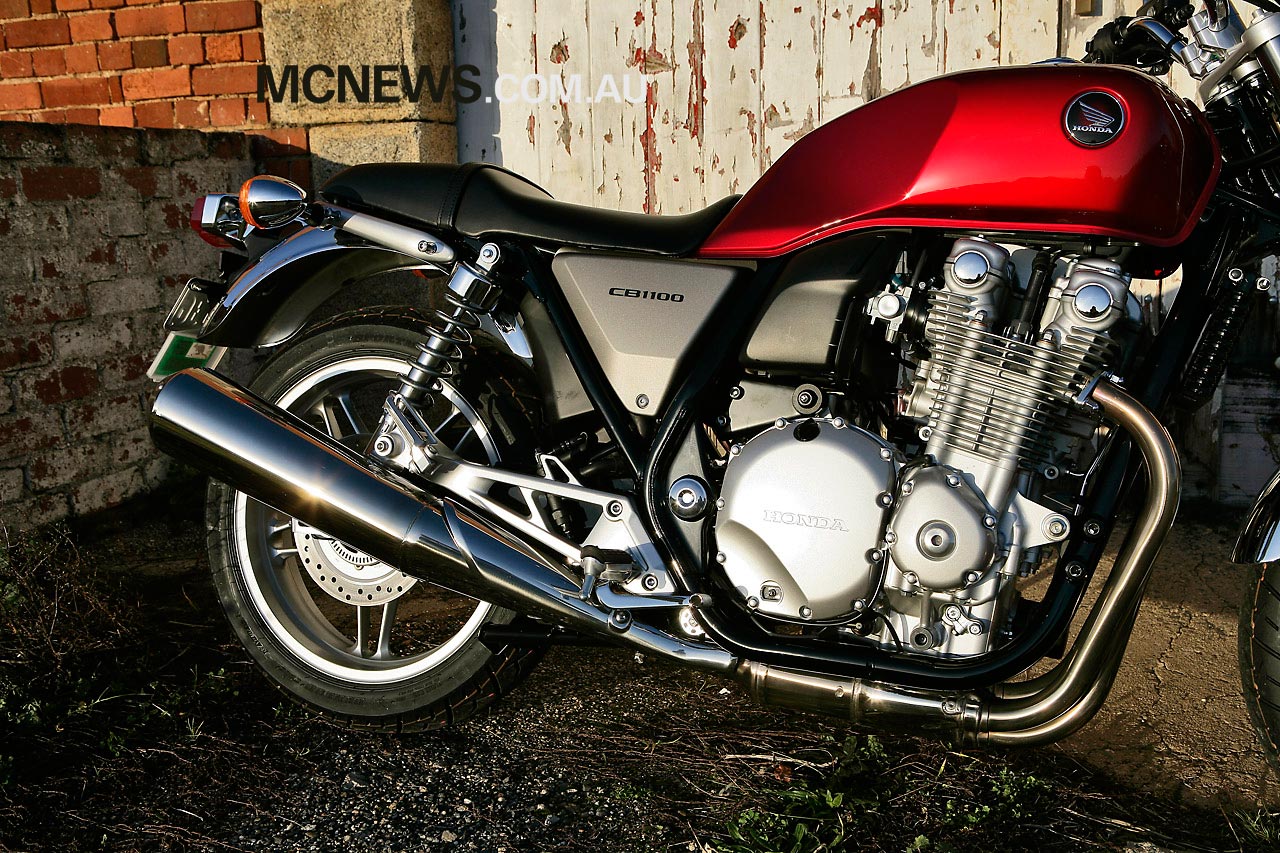
It really is quite a charmer and the more I looked at it and ride it the more I wanted to keep it. I really enjoyed my first 1000 km aboard the machine and would have liked the opportunity to cover many more kilometres aboard the CB1100. This really is a bike that adds up to more than the sum of its parts, the experience from the saddle conveys that message loud and clear. The CB1100 also came to Australia in a solid black, and a sort of pearl white, but the red is the absolute stand-out, it seems so deep you could dive into it. The chrome on the CB1100 is beautiful.

They didn’t sell in big numbers Down Under, thus there are not lots of them on secondhand market, where low-kilometre examples now sell for around half of that original 15k purchase price. I can’t imagine there are any likely technical problems that would crop up during long term ownership and would expect a modern CB1100 to just about run forever.
The CB1100 moved me, and that perhaps says more than the 1000 words that precede my final positive and negative assertions.
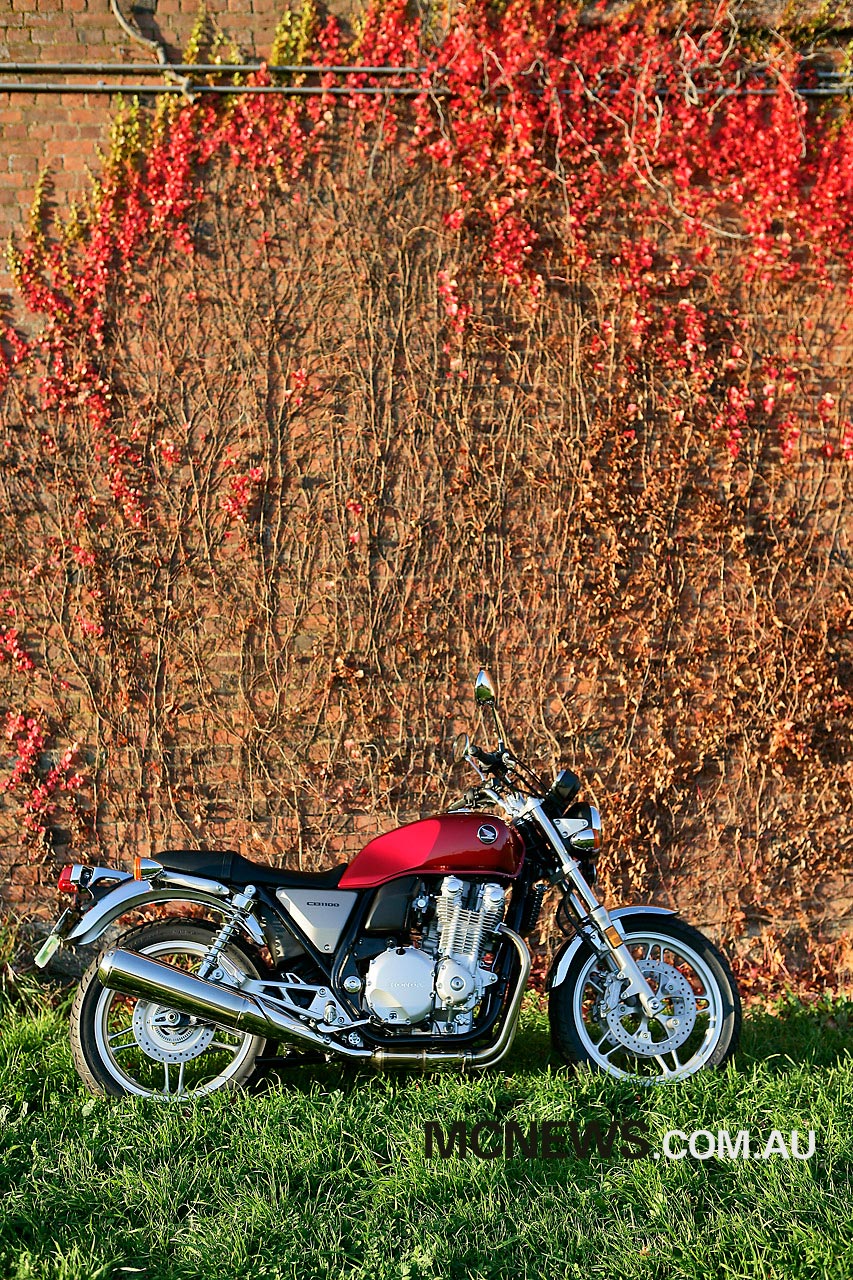
Honda CB1100 at a glance
Positives
+ Gorgeous
+ Charisma that few inanimate objects manage to convey
+ Relaxing ride
+ Did I mention how good this thing looks in the flesh
Negatives
– 14.6 litre tank too modest
– More bottom end grunt would be nice
– Seat could do with firmer padding for the long haul
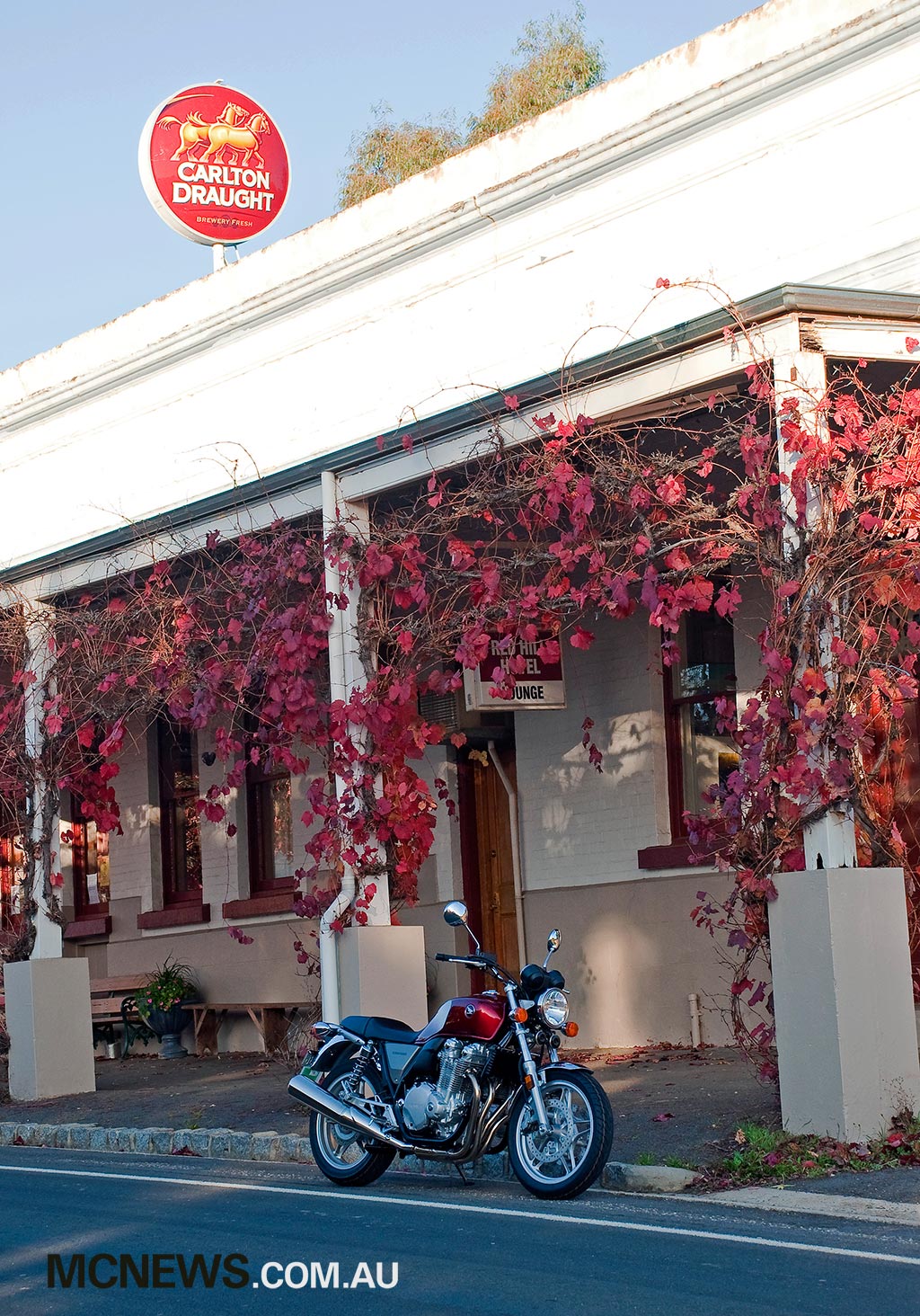
| Honda CB1100 Specifications | |
| Specs | Honda CB1100 |
| Engine | 1140cc, liquid-cooled four-stroke, in-line four |
| Bore x Stroke | 73.5×67.2mm |
| Compression Ratio | 9.5:1 |
| Transmission | Five speed, chain drive |
| Seat Height | 775mm |
| Length x Width x Height | 2195 x 835 x 1130mm |
| Wheelbase | 1490mm |
| Caster | 27° |
| Trail | 114mm |
| Tyres | 110/80R18 (F), 140/70R18 (R), Dunlop D205 |
| Wet Weight | 247 kg |
| Fuel Capacity | 14.6 Litres |
| Average Consumption on test | 6 litres per 100km |
| Range | 240 km |
| Warranty | Two years |
| Price | When released in Australia in 2013 it retailed for $15,090 +ORC |
| Worth Now | Around $7500 on the Australian second-hand market |
